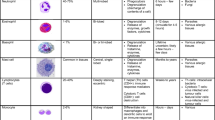Abstract
How do we remain healthy, for the most parts, in the midst of an environment teeming with opportunistic and infectious microbes, potential carcinogens and allergens? The fact is that our immune system, by and large, does a fine job in protecting us. It is therefore important to understand the organization of the immune network, which is broadly categorized into two groups: innate and adaptive. Cells involved in innate immunity are the first to come into contact with invading microbes, similar to the border security force, and respond rapidly but in a non-specific manner. On the other hand, the cells involved in adaptive immunity are slower to respond but act in a very specific manner. Though the primary response is slow, the secondary response is much faster and demonstrates memory. This article will focus on some important features and key players involved in the adaptive immune response. The first part deals with the humoral immune response mediated mainly by immunoglobulins produced by the B cells. The second part deals with T cells, the Major Histocompatibility Complex (MHC)-encoded molecules, and Recombination Activating Genes (RAG) responsible for generating diverse B-cell receptors (BCR) and T-cell receptors (TCR). With the advent of newer and smarter infectious agents, it is important to understand the working of the immune network as more research in this area may facilitate the development of better protective strategies.
Similar content being viewed by others
Suggested Reading
F M Burnet, The clonal selection theory of acquired immunity, pp.1–209, Cambridge University Press, Cambridge, 1959.
T S Chang, B Glick, A R Winter, The significance of the bursa of Fabricius of chickens in antibody production., Poultry Sci. Vol.34, p.1187, 1955.
N Hozumi, S Tonegawa, Evidence for somatic rearrangement of immunoglobulin genes coding for variable and constant regions. Proc. Natl. Acad. Sci., USA., Vol.73, pp.3628–3632, 1976.
R M Zinkernagel and P C Doherty, Immunological surveillance against altered self components by sensitised T lymphocytes in lymphocytic choriomeningitis, Nature, Vol.251, pp.547–548, 1974.
P Bretscher and M Cohn, A theory of self-nonself discrimination, Science, Vol.169, pp.1042–1049, 1970.
J F Miller, Immunological function of the thymus, Lancet, Vol.2, pp.748–749, 1961.
Author information
Authors and Affiliations
Corresponding author
Rights and permissions
About this article
Cite this article
Ahmed, A., Saha, B., Patwardhan, A. et al. The major players in adaptive immunity. Reson 14, 455–471 (2009). https://doi.org/10.1007/s12045-009-0046-0
Published:
Issue Date:
DOI: https://doi.org/10.1007/s12045-009-0046-0




